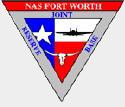Hobby Master HA4403 Royal Netherlands Air Force Lockheed-Martin F-35A Lightning II Joint Strike Fighter - F-001 [Low-Vis Scheme] (1:72 Scale)
"The F-35 program executive officer, has stated that the 'F-35 enjoys a significant Combat Loss Exchange Ratio advantage over the current and future air-to-air threats, to include Sukhois, which are currently being flown by the Russian, Indian, and Chinese Air Forces.'"
- Maj Gen Charles R. Davis, USAF, the F-35 program executive officer
 The Lockheed Martin F-35 Lightning II is a fifth-generation, single-seat, single-engine, stealth-capable military strike fighter, a multirole aircraft that can perform close air support, tactical bombing, and air superiority fighter missions. The F-35 has three different models; one is the conventional takeoff and landing variant, the second is short takeoff and vertical-landing variant, and the third is a carrier-based variant.
The Lockheed Martin F-35 Lightning II is a fifth-generation, single-seat, single-engine, stealth-capable military strike fighter, a multirole aircraft that can perform close air support, tactical bombing, and air superiority fighter missions. The F-35 has three different models; one is the conventional takeoff and landing variant, the second is short takeoff and vertical-landing variant, and the third is a carrier-based variant.
The F-35 is descended from the X-35, the product of the Joint Strike Fighter (JSF) program. Its development is being principally funded by the United States, with the United Kingdom, and other partner governments providing additional funding. It is being designed and built by an aerospace industry team led by Lockheed Martin with Northrop Grumman and BAE Systems as major partners. Demonstrator aircraft flew in 2000, with the first flight on December 15th, 2006.
The F-35A is the conventional take-off and landing (CTOL) variant intended for the USAF and other air forces. It is the smallest, lightest version and capable of 9 g, the highest of all variants.
Although the F-35A currently conducts aerial refueling via boom and receptacle method, the aircraft can be modified for probe-and-drogue refueling if needed by the customer. A drag chute pod can be installed on the F-35A, with the Royal Norwegian Air Force being the first operator to adopt it.
Pictured here is a 1:72 scale replica of a Royal Netherlands Lockheed-Martin F-35A Lightning II Joint Strike Fighter.
Sold Out!
Dimensions:
Wingspan: 5-3/4-inches
Length: 8-1/2-inches
Release Date: July 2014
 Historical Account: "Performance Anxiety" - Some public figures such as conservative politician Dennis Jensen in Australia, and American combat aircraft expert Pierre Sprey, have expressed concern over the aircraft's combat capabilities with specific regard to radar visibility, weight to power ratio, turn rate and inflammability. The concerns about the F-35's performance have resulted in part from reports of RAND simulations where numerous Russian Sukhoi fighters defeat a handful of F-35s. Dr. Jensen also suggested it is inferior to current and superseded aircraft already in service around the world. As a result of these issues the Australian defence minister, Joel Fitzgibbon, requested a formal briefing from the Department of Defence on the computer simulation. This briefing stated that the reports of the simulation were inaccurate, and that it did not compare the F-35's performance against that of other aircraft. Controversial Australian engineer Carlo Kopp has also claimed that new long-wavelength radars operated by the Russian armed forces can detect the F-35 at any angle. Additionally, Kopp claims that the F-35 is significantly stealthy only in a narrow cone around its nose, and is more like a conventional aircraft in a clean configuration from the side aspect, and only partially stealthy in certain radar wavelengths from the rear aspect.
Historical Account: "Performance Anxiety" - Some public figures such as conservative politician Dennis Jensen in Australia, and American combat aircraft expert Pierre Sprey, have expressed concern over the aircraft's combat capabilities with specific regard to radar visibility, weight to power ratio, turn rate and inflammability. The concerns about the F-35's performance have resulted in part from reports of RAND simulations where numerous Russian Sukhoi fighters defeat a handful of F-35s. Dr. Jensen also suggested it is inferior to current and superseded aircraft already in service around the world. As a result of these issues the Australian defence minister, Joel Fitzgibbon, requested a formal briefing from the Department of Defence on the computer simulation. This briefing stated that the reports of the simulation were inaccurate, and that it did not compare the F-35's performance against that of other aircraft. Controversial Australian engineer Carlo Kopp has also claimed that new long-wavelength radars operated by the Russian armed forces can detect the F-35 at any angle. Additionally, Kopp claims that the F-35 is significantly stealthy only in a narrow cone around its nose, and is more like a conventional aircraft in a clean configuration from the side aspect, and only partially stealthy in certain radar wavelengths from the rear aspect.
The criticism of the F-35 has been dismissed by the Pentagon and manufacturer. The USAF has conducted an analysis of the F-35's air-to-air performance against all 4th generation fighter aircraft currently available, and has found the F-35 to be at least four times more effective. Maj Gen Charles R. Davis, USAF, the F-35 program executive officer, has stated that the "F-35 enjoys a significant Combat Loss Exchange Ratio advantage over the current and future air-to-air threats, to include Sukhois", which are currently being flown by the Russian, Indian, and Chinese Air Forces. (courtesy Wikipedia)
General characteristics Crew: 1 - Length: 51.4 ft (15.67 m)
- Wingspan: 35 ft (10.7 m)
- Height: 14.2 ft (4.33 m)
- Wing area: 460 ft² (42.7 m²)
- Empty weight: 29,300 lb (13,300 kg)
- Loaded weight: 44,400 lb (20,100 kg)
- Max takeoff weight: 70,000 lb (31,800 kg)
- Powerplant: 1× Pratt & Whitney F135 afterburning turbofan
- Dry thrust: 28,000 lbf (125 kN)
- Thrust with afterburner: 43,000 lbf[256] (191 kN)
- Internal fuel: 18,480 lb (8,382 kg)
- Performance
Maximum speed: Mach 1.67 (1,283 mph, 2,065 km/h) - Range: 1,200 nmi (2,220 km) on internal fuel
- Combat radius: 610 nmi (1,110 km) on internal fuel
- Service ceiling: 60,000 ft (18,288 m)
- Rate of climb: classified (not publicly available)
- Wing loading: 91.4 lb/ft² (446 kg/m²)
- Thrust/weight:
With full fuel: 0.84; - With 50% fuel: 1.04 B:
- g-Limits: 9 g
- Armament
Guns: 1 × GAU-22/A 25 mm (0.984 in) cannon internally with 180 rounds - Hardpoints: 6× external pylons on wings with a capacity of 15,000 lb (6,800 kg) and 2 × internal bays with 2 pylons each[60] for a total weapons payload of 18,000 lb (8,100 kg) and provisions to carry combinations of:
- Missiles:
Air-to-air: AIM-120 AMRAAM, AIM-132 ASRAAM, AIM-9X Sidewinder, IRIS-T - Air-to-ground: AGM-154 JSOW, AGM-158 JASSM
- Bombs:
Mark 84, Mark 83 and Mark 82 GP bombs - Mk.20 Rockeye II cluster bomb
- Wind Corrected Munitions Dispenser capable
- Paveway-series laser-guided bombs
- Small Diameter Bomb (SDB)
- JDAM-series
- B61 nuclear bomb (in 2017)
- Avionics
Northrop Grumman Electronic Systems AN/APG-81 AESA radar - Differences across variants
- ^ B is the same, C: 14.9 ft (4.54 m)
- ^ C is same, B: 60,000 lb (27,000 kg)
- ^ F-35B: 14,003 lb (6,352 kg); F-35C: 20,085 lb (9,110 kg)
- ^ F-35B: 7.5 g, F-35C: 7.5 g
- ^ fitted as an external pod with 220 rounds in the F-35B and F-35C
Wingspan: 5-3/4-inches
Length: 8-1/2-inches
|





![Star Trek Federation Tug [With Collector Magazine]](http://cdn4.volusion.store/qh9e9-jdqv9/v/vspfiles/photos/EMST0140-1.jpg?v-cache=1740197136)



